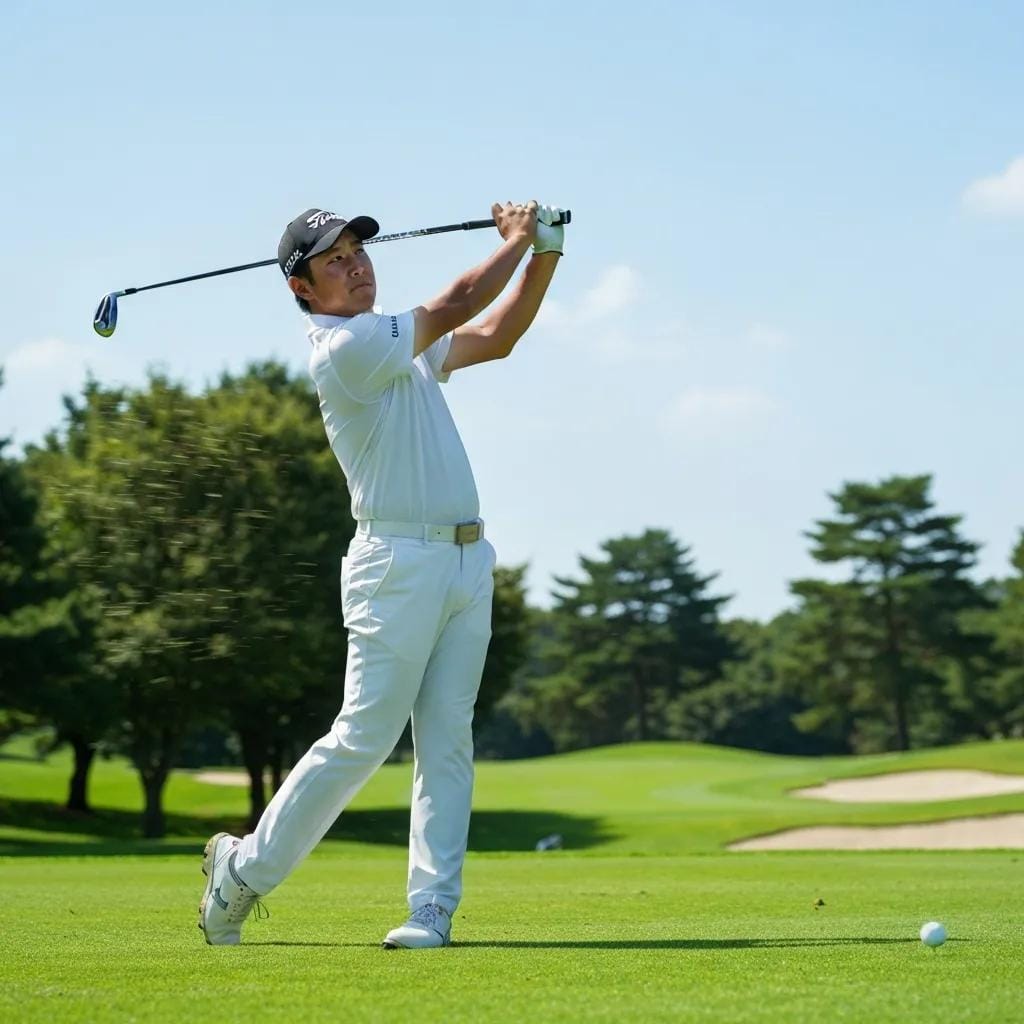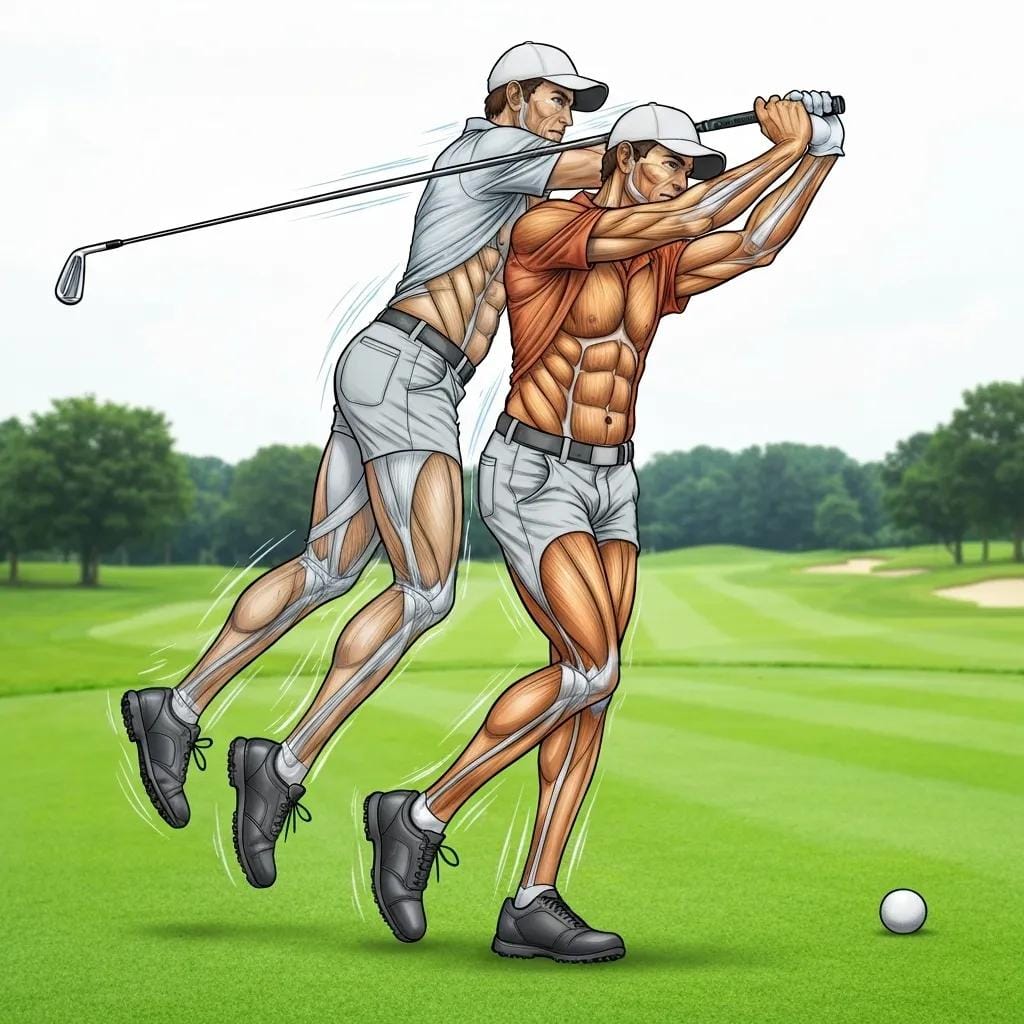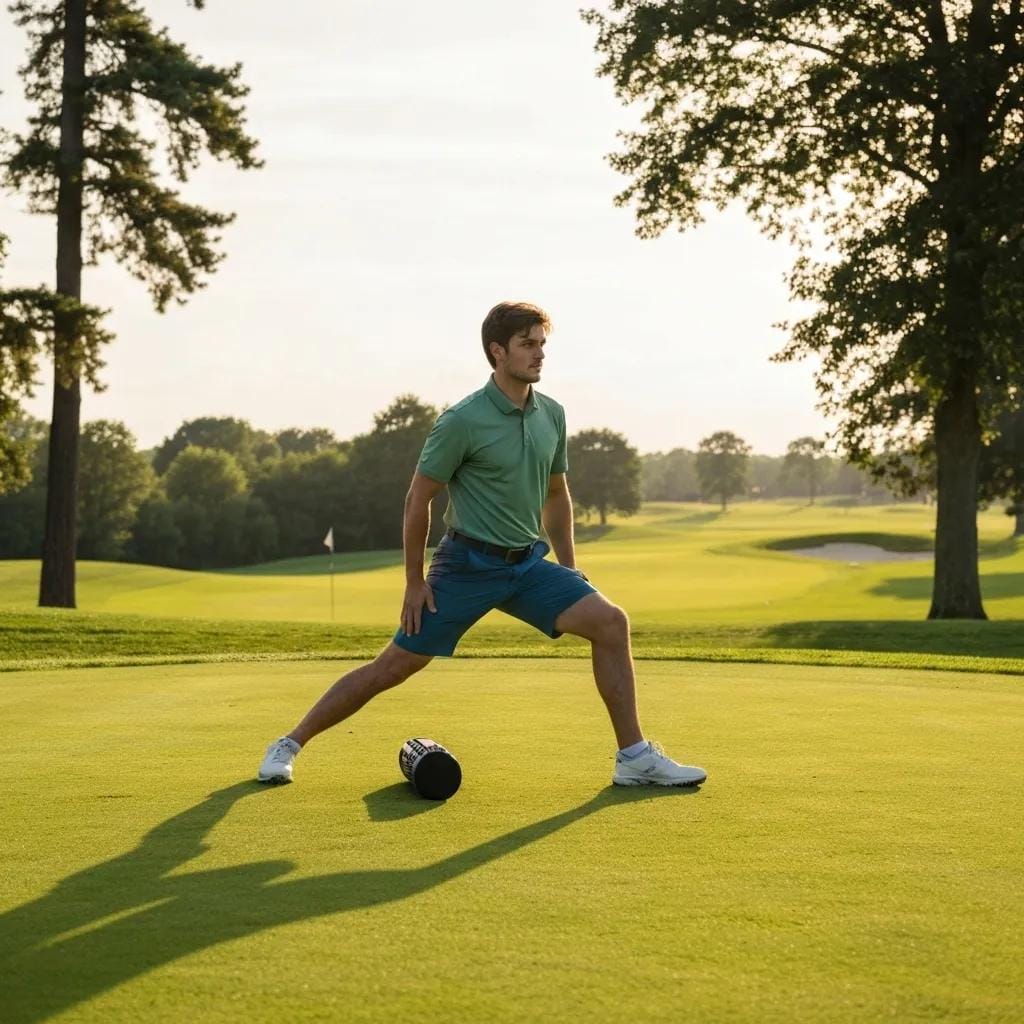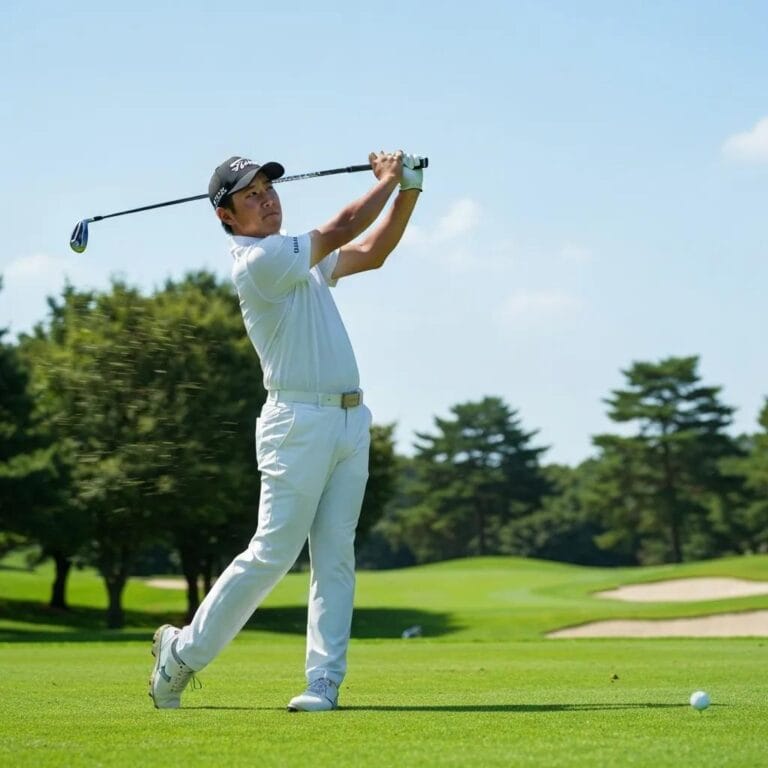
Understanding Golf Swing Analysis Techniques for Better Performance
Did you know that subtle biomechanical adjustments can boost clubhead speed by up to 15% while reducing injury risk? Mastering golf swing analysis techniques unlocks power, consistency, and long-term wellness. In this article, you’ll discover how biomechanics, swing faults correction, speed training, cutting-edge 3D technology, targeted fitness drills, injury prevention strategies, and integrated physical therapy work together to transform your game.
We’ll explore: golf performance tpi
- What biomechanics reveals about power generation
- How to identify and fix common swing faults
- Methods to increase swing speed with strength, mobility, and core work
- Benefits of 3D motion capture, launch monitors, and video analysis
- Golf-specific fitness routines that build stability, flexibility, and power
- Strategies for preventing injuries and rehabilitating golfer’s elbow, back pain, and wrist issues
- Why combining swing data with specialized physical therapy at rhw-indy.com delivers holistic performance gains
By the end, you’ll understand the full spectrum—from analysis concepts to personalized therapy—needed to elevate your golf swing and safeguard your body.
What Is Golf Swing Biomechanics and Why Does It Matter?
Golf swing biomechanics is the study of how body segments generate, transfer, and optimize force during the swing to maximize distance and accuracy while reducing injury risk. By analyzing joint angles, sequencing, and muscle activation, you gain insights into your kinetic chain, rotation, and posture. For golfers seeking performance improvements and long-term joint health, this knowledge provides a roadmap for targeted training and rehabilitation.
This foundational perspective sets the stage for examining how specific components—kinetic chain, ground reaction forces, rotational mechanics, and body-swing connection—combine to create an efficient, powerful swing.
Rotational Biomechanics of the Elite Golf Swing: Benchmarks for Amateurs
This study investigated the three-dimensional kinematics and kinetics of professional and amateur golfers to identify biomechanical factors influencing golf swing power and injury risk. Findings indicated that lower back injuries account for 26-52% of golf-related complaints, shoulder injuries 6-10%, and wrist injuries 13-36%, often linked to improper swing mechanics.
This research directly supports the article’s discussion on golf swing biomechanics, its impact on performance, and the prevalence and causes of common golf-related injuries.
How Does the Kinetic Chain Influence Your Golf Swing?

The kinetic chain describes the sequential activation of feet, legs, hips, torso, arms, and club to generate maximal speed. Efficient energy transfer begins with a stable leg drive, flows through rotating hips, and culminates in precise wrist release. Disruptions anywhere along this chain—weak glutes, limited hip rotation, or poor foot stability—dissipate power and compromise accuracy.
Corrective core and glute-strengthening exercises restore kinetic chain integrity and prepare you for more consistent sequencing. Understanding this sequence underpins the next phase: harnessing ground reaction forces.
What Role Do Ground Reaction Forces Play in Swing Power?
Ground reaction forces (GRFs) are the vertical and horizontal pressures exerted against the turf that translate into rotational torque and clubhead acceleration. Higher vertical GRFs enable stronger hip drive, while balanced lateral pressures maintain posture. A well-timed weight shift from trail to lead foot amplifies GRFs and increases ball speed.
| Phase | Key Pressure Point | Performance Impact |
|---|---|---|
| Address to Backswing | Trail foot under heel | Builds stable torque base |
| Transition | Heel-to-toe shift | Boosts hip rotation potential |
| Downswing | Lead foot under arch | Maximizes ground thrust |
| Impact to Follow-Through | Toe pressure | Enhances finish stability |
Optimizing GRFs elevates rotational mechanics by providing a solid foundation for swing rotation and sequencing. golf performance tpi
How Does Rotational Mechanics Affect Swing Efficiency?
Rotational mechanics hinge on maximizing separation between shoulder and hip rotation—often called the X-factor—to store elastic energy in the torso. Efficient separation amplifies swing radius and clubhead speed. Poor sequencing or restricted thoracic mobility limits this separation and forces compensations, leading to inconsistent ball striking.
By improving thoracic spine rotation through targeted mobility drills, you unlock greater X-factor potential, directly converting into extra yards and tighter dispersion patterns.
How Is the Body-Swing Connection Key to Consistent Performance?
The body-swing connection refers to how each segment’s motion influences the next. When hips lead the downswing, shoulders and arms follow naturally, maintaining clubhead lag and preserving angle. Disconnects—such as early arm cast or reverse pivot—break this harmony, causing slices, hooks, and loss of tempo.
Reinforcing proprioception with mirror feedback and slow-motion video analysis helps retrain coordinated segment interactions, creating consistent, repeatable swings. This understanding of biomechanics seamlessly transitions into diagnosing and correcting common faults.
What Are the Most Common Golf Swing Faults and How Can They Be Fixed?
Golf swing faults arise from biomechanical limitations and poor sequencing. Early extension, reverse pivot, over-the-top swings, and inconsistent wrist angles are among the most prevalent. Identifying their physical roots allows for targeted exercise interventions that correct the fault and reduce injury risk.
How Can Early Extension Be Corrected with Core Stability Exercises?
Early extension occurs when the pelvis moves toward the ball during the downswing, flattening posture and reducing power. Core stability exercises like dead bugs, Pallof presses, and plank variations reinforce neutral spine control. By strengthening the deep abdominal wall and posterior chain, you prevent unintended hip motion. golf performance tpi
- Dead Bugs with Slow Reps improve lumbar-pelvic stability
- Pallof Presses activate transverse abdominis against rotation
- Side Planks support lateral trunk endurance
These exercises reestablish the proper sequence, ensuring you retain posture through impact and achieve repeatable strikes.
What Exercises Improve Hip Mobility to Fix Reverse Pivot?
Reverse pivot manifests when weight shifts toward the front foot in the backswing, limiting hip turn and causing compensatory upper-body movement. Hip capsule and adductor stretches, combined with glute activation drills, restore freedom of movement: golf performance tpi
- 90/90 Hip Switches – Enhance internal and external rotation.
- Lateral Lunges – Open medial hip structures.
- Glute Bridge with March – Coordinates hip extension with pelvic stability.
Restoring hip mobility prevents reverse pivots and supports a powerful, balanced takeaway.
How Does Shoulder and Torso Rotation Help Correct Over-the-Top Swings?
An over-the-top swing path results from early shoulder pull or limited torso rotation, causing an outside-to-in club path and weak contact. Thoracic spine mobility drills—such as foam-roller extensions and standing trunk rotations—improve upper-body separation. When shoulders rotate fully before arm drop, the club transitions into the correct plane.
Integrating resisted rotation with cable or band drills builds dynamic control, aligning shoulders and torso for an inside-out takeaway.
How Can Improving Wrist Angles Lead to More Consistent Impact?
Inconsistent wrist hinge leads to flip or cast at the top of the swing, reducing lag and clubhead speed. Wrist flexion/extension drills and forearm pronation/supination exercises enhance joint awareness: golf performance tpi
- Wrist Curls with Light Dumbbells develop flexor/extensor strength.
- Band-Resisted Ulnar Deviations improve lateral stability.
- Grip-Squeeze Drills reinforce pressure distribution across the club.
These interventions yield sharper impact angles and more reliable ball striking, paving the way to targeted speed enhancements.
How Can Golf Swing Speed Be Increased Through Targeted Training?
Increasing swing speed demands a blend of strength, power, mobility, and core stability. By strategically combining explosive exercises, flexibility routines, and tempo drills, you supercharge clubhead acceleration while safeguarding against injury. golf performance tpi
What Strength and Power Exercises Boost Clubhead Speed?
Delivering maximum power requires lower-body and core explosiveness, followed by rapid upper-body rotation. The following drills develop those attributes:
| Exercise | Focus | Benefit |
|---|---|---|
| Medicine Ball Rotational Throws | Core-to-upper body link | Enhances rotational acceleration |
| Trap Bar Deadlifts | Hips and posterior chain | Increases driving force |
| Single-Leg Romanian Deadlift | Unilateral stability | Improves balance and power distribution |
Effects of Resistance Training Methods on Golf Clubhead Speed and Hitting Distance: A Systematic Review
A systematic review of various resistance training methods concluded that such training positively influences golf clubhead speed and hitting distance. Specifically, a combination of nonspecific and golf-specific training protocols resulted in an average increase of 4.1% in clubhead speed and 5.2% in hitting distance, emphasizing the importance of targeted strength and power development for golfers.
This citation provides evidence for the article’s claims regarding the effectiveness of targeted training, including strength and power exercises, in increasing golf swing speed and overall performance.
How Does Flexibility and Mobility Training Enhance Swing Speed?
Improved range of motion in hips, thoracic spine, and shoulders reduces energy leaks and allows a wider swing arc. Dynamic mobility flows—such as hip circles, banded shoulder dislocations, and windmills—prepare tissues for full rotational demands. Enhanced mobility directly correlates with greater golf performance potential and reduced compensations.
These drills set the stage for optimized tempo and rhythm driven by core stability.
What Role Does Core Stability Play in Swing Tempo and Rhythm?
A stable core acts as the transfer point for lower-body power into upper-body acceleration. Exercises that enhance anti-rotation and anti-flexion control—like cable chops and bird-dogs—create a solid midsection that regulates swing tempo. Consistent core engagement prevents energy leaks and smooths rhythm, supporting sustained speed through the ball.
By mastering tempo drills (e.g., metronome-guided swings), you synchronize power production with precise timing, maximizing velocity.
How Do Performance Metrics Like Launch Angle and Spin Rate Affect Speed?
Launch angle and spin rate determine how effectively clubhead speed converts into ball distance. Optimizing launch parameters through targeted practice and launch monitor feedback reveals whether you need loft adjustments, swing path changes, or impact position refinements. Tracking these metrics guides incremental speed gains by aligning mechanics with equipment settings.
Understanding these analytics bridges technical training with physical performance goals, leading us to explore how advanced analysis technology furthers this integration.
How Does 3D Golf Swing Analysis Technology Improve Performance?
3D motion capture, video analysis apps, and launch monitors provide precise kinematic and kinetic data that uncover hidden inefficiencies. By visualizing joint trajectories, impact angles, and force curves, golfers and therapists can craft evidence-based improvement plans.
This technological insight seamlessly integrates with physical therapy services at rhw-indy.com, creating personalized protocols that address both biomechanical faults and underlying physical limitations.
What Are the Benefits of Using V1 Golf and Other Swing Analyzers?
Video-based platforms like V1 Golf offer frame-by-frame playback, on-screen drawing tools, and side-by-side comparisons to professional swings. Benefits include: golf performance tpi.
- Instant visual feedback on swing plane alignment
- Precise angle measurements for shoulder, hip, and club positions
- Easy sharing with coaches and therapists for collaborative analysis
Such clarity accelerates understanding of faults and informs targeted exercise prescriptions.
How Does 3D Motion Capture Provide Detailed Biomechanical Assessment?
Three-dimensional systems employ infrared cameras and reflective markers to track joint centers in real time, generating comprehensive models of body motion. Key advantages:
- Accurate joint angle and velocity data reveal rotational sequences.
- Force plate integration quantifies ground reaction curves.
- Customized movement reports allow therapists to pinpoint compensation patterns.
This depth of insight can detect subtle asymmetries and guide progressive rehabilitation strategies.
How Are Launch Monitor Metrics Used to Inform Physical Therapy?
Launch monitors record clubhead speed, ball speed, launch angle, spin rate, and smash factor. When combined with motion data, these metrics identify whether a speed limitation stems from mechanics or physical constraints. For instance, low ball speed despite high clubhead velocity may indicate poor impact stability, prompting targeted wrist and forearm stabilization exercises.
Correlating performance metrics with physiologic deficits enables precise therapy plan adjustments.
How Is Swing Data Integrated into Personalized Therapy Plans?
By overlaying biomechanical faults and physical assessments, therapists at rhw-indy.com tailor exercise progressions that address each golfer’s unique needs. A typical integration workflow includes: golf performance tpi
- Data collection via video, 3D capture, and force plates
- Clinical evaluation of joint range, strength, and motor control
- Design of corrective exercises and mobility drills synchronized with swing demands
- Ongoing performance monitoring to refine protocols
This synergy of analysis and rehabilitation ensures enduring improvements in both swing mechanics and physical capacity.
What Golf-Specific Fitness Training Enhances Swing Performance?
Targeted fitness for golf emphasizes core strength, hip and thoracic mobility, and power development. Programs that balance stability and flexibility foster consistent mechanics, while dynamic drills add speed and endurance. golf performance
Which Core Strength Exercises Are Best for Golfers?
A resilient core resists unwanted rotations and flexion, supporting efficient energy transfer. Top exercises include:
- Cable Anti-Rotation Press strengthens obliques against torque
- Pallof Press with Twist integrates rotation control
- Stability Ball Rollouts challenge deep abdominals and spinal integrity
These movements build a foundation for controlled yet explosive swings.
How Do Hip and Thoracic Spine Mobility Drills Improve Swing Mechanics?
Enhancing rotation at the hips and thoracic spine widens swing arc and reduces compensatory shoulder strain. Effective drills:
- Thoracic Extensions on Foam Roller restore mid-back mobility
- Hip Flexor Release with Lunge and Twist targets anterior hip capsules
- 90/90 Hip Stretch with Rotation balances internal and external rotation
Restored mobility in these areas directly supports powerful, pain-free turns.
What Flexibility Routines Support Long-Term Golf Performance?
Maintaining tissue health and joint range prevents stiffness that can derail mechanics and invite injury. Routines combining dynamic and static components—such as dynamic leg swings before play and post-round PNF stretching for the shoulders—promote resilience. Regular flexibility work underpins consistent performance across seasons.
How Does Power Training Translate to Increased Clubhead Speed?
Power exercises bridge strength and speed through rapid, forceful movements. Medicine ball rotational throws, kettlebell swings, and plyometric lateral hops condition the nervous system for fast-twitch recruitment. Embedding these drills into a structured program generates measurable increases in clubhead acceleration and distance.
As fitness improvements compound, injury prevention and rehabilitation become equally important for sustaining swing gains.
How Can Golf Injury Prevention and Rehabilitation Support Better Swing Performance?

Addressing pain and physical limitations is essential to maintaining a consistent, powerful swing. Common golf injuries—back pain, golfer’s elbow, wrist strains—stem from overuse, poor mechanics, and inadequate conditioning. Proactive prevention and targeted rehabilitation ensure you stay on course. golf performance tpi
What Are Common Golf Injuries and Their Physical Causes?
Over 80% of golf-related injuries occur in the lower back, elbow, and wrist due to repetitive torques and impact forces. Key causes include:
- Lumbar strains from insufficient core stabilization and poor rotation sequencing
- Golfer’s elbow (medial epicondylitis) from repetitive flexor tendon overloading
- Wrist sprains due to uncontrolled wrist hinge and muscle imbalances
The Golfer's Fore, Fore +, and Advanced Fore + Exercise Program: An Exercise Series and Injury Prevention Program for the Golfer
This clinical commentary highlights that golf injuries are prevalent, with an annual incidence ranging from 15.8% to 40.9% in amateur golfers and 31% in professionals, with 82.6% of these injuries attributed to overuse. It also notes that a significant majority (83%) of injured golfers seek assistance from a physical therapist, underscoring the critical role of specialized physical therapy in rehabilitation and injury management.
This research supports the article’s emphasis on injury prevention and the essential role of physical therapy in addressing physical limitations and rehabilitating common golf injuries to sustain performance.
How Does Specialized Physical Therapy Treat Golfer's Elbow and Wrist Injuries?
Therapists employ manual techniques, eccentric strengthening, and neuromuscular re-education to heal tendon injuries and restore joint control:
- Cross-Friction Massage promotes tendon remodeling
- Eccentric Wrist Flexor Exercises strengthen connective tissue under load
- Proprioceptive Band Drills retrain dynamic wrist stability
This combination of hands-on and exercise-based interventions helps golfers return to play safely.
What Pre-Round Warm-Up and Post-Round Recovery Techniques Prevent Injury?
A structured warm-up activates neuromuscular pathways and prepares joints for load:
- Dynamic Hip Swings prime lower-body rotation
- Arm Circles with Light Weights open shoulder capsules
- Short-Tempo Practice Swings establish rhythm
Post-round recovery focuses on myofascial release, gentle stretching, and targeted icing or soft-tissue work to minimize inflammation and expedite tissue repair.
How Does Rehabilitation Improve Physical Limitations Affecting Swing?
Corrective therapy identifies restriction sources—tight hip flexors, weak glutes, thoracic stiffness—and prescribes progressive mobility, stabilization, and strength drills. As physical limitations resolve, golfers regain full swing range, improved balance, and reduced pain, supporting lasting performance gains.
This holistic view of prevention and rehab underscores the value of integrating swing analysis with physical therapy.
Why Is Integrating Swing Analysis with Physical Therapy Essential for Golfers?
Combining detailed swing data with clinical expertise creates a comprehensive approach that addresses both mechanical faults and underlying physical constraints. This integrated model delivers superior golf performance improvements and minimizes downtime due to injury.
How Does Physical Therapy Address Limitations Revealed by Swing Analysis?
When analysis tools identify restricted rotation or force plate imbalances, therapists tailor interventions—joint mobilizations, neuromuscular drills, strength progressions—to tackle root causes. Rather than isolated swing corrections, this method corrects the body’s capacity to execute optimal mechanics.
Reestablishing physical function based on objective data ensures sustainable, measurable progress.
What Makes a Holistic Approach to Golf Performance Effective?
A holistic strategy unites swing technique coaching, fitness training, injury prevention protocols, and rehabilitation under one roof. By aligning all elements—mechanical, neuromuscular, and structural—golfers experience cohesive improvements in power, consistency, and resilience.
This unified framework far surpasses piecemeal programs that only address isolated aspects.
How Can Case Studies Demonstrate the Benefits of Combined Analysis and Rehab?
At rhw-indy.com, golfers have increased clubhead speed by 12–18% and reduced back pain episodes by 75% after integrated protocols. One avid amateur regained a pain-free swing following targeted therapy informed by 3D capture data, translating into two extra fairways per round.
These real-world successes illustrate the tangible value of marrying technology and therapy.
How Can Golfers Schedule Personalized Assessments for Swing Improvement?
To begin your journey, book a comprehensive golf performance assessment at rhw-indy.com. Our specialists will combine swing analysis, physical evaluation, and tailored exercise prescriptions to develop a roadmap for your unique goals. Experience expert, compassionate care that empowers you to play stronger, faster, and pain-free.
By weaving biomechanical insights with corrective exercises, targeted training, advanced technology, and specialized therapy, you build a golf swing that performs at its best and stands the test of time. Embrace this integrated approach to elevate your game and protect your body with confidence.
Frequently Asked Questions
What is the importance of swing analysis in improving golf performance?
Swing analysis is crucial for identifying inefficiencies in a golfer’s technique. By utilizing tools like video analysis and 3D motion capture, golfers can visualize their swing mechanics, pinpoint specific faults, and understand how these affect their performance. This data-driven approach allows for targeted training and rehabilitation, leading to improved accuracy, distance, and consistency. Moreover, it helps in preventing injuries by addressing biomechanical issues before they become problematic.
How can golfers benefit from integrating fitness training with swing analysis?
Integrating fitness training with swing analysis enhances overall performance by addressing both physical and technical aspects of the game. Fitness training focuses on building strength, flexibility, and endurance, which are essential for executing an efficient swing. When combined with swing analysis, golfers can tailor their fitness routines to target specific weaknesses identified in their swing mechanics, leading to improved power, stability, and reduced injury risk. This holistic approach fosters a more resilient and effective golfer.
What role does mental training play in improving golf swing performance?
Mental training is a vital component of golf performance, as it helps golfers develop focus, confidence, and resilience under pressure. Techniques such as visualization, mindfulness, and routine establishment can enhance concentration and reduce anxiety during play. By incorporating mental training alongside physical and technical practice, golfers can improve their ability to execute swings consistently, manage course challenges, and maintain composure in competitive situations, ultimately leading to better performance outcomes.
How can golfers track their progress in swing improvement?
Tracking progress in swing improvement can be achieved through various methods, including regular swing analysis sessions, performance metrics from launch monitors, and maintaining a practice journal. By documenting swing changes, scores, and physical fitness improvements, golfers can assess their development over time. Additionally, feedback from coaches and therapists can provide valuable insights into areas of growth and further adjustments needed, ensuring a structured approach to continuous improvement.
What are the best practices for maintaining a healthy golf swing over time?
Maintaining a healthy golf swing involves a combination of regular practice, proper conditioning, and injury prevention strategies. Golfers should engage in consistent strength and flexibility training to support their swing mechanics. Additionally, incorporating warm-up routines before play and cool-down stretches afterward can help prevent injuries. Regular assessments with professionals can also ensure that any emerging issues are addressed promptly, allowing golfers to sustain their performance and enjoyment of the game over the long term.
How does nutrition impact golf performance and swing efficiency?
Nutrition plays a significant role in golf performance by providing the energy and nutrients necessary for optimal physical function. A balanced diet rich in carbohydrates, proteins, and healthy fats supports endurance, strength, and recovery. Proper hydration is also crucial, as dehydration can impair focus and physical performance. By fueling their bodies appropriately, golfers can enhance their stamina on the course, maintain concentration during play, and recover effectively from training sessions, ultimately improving swing efficiency and overall performance.

